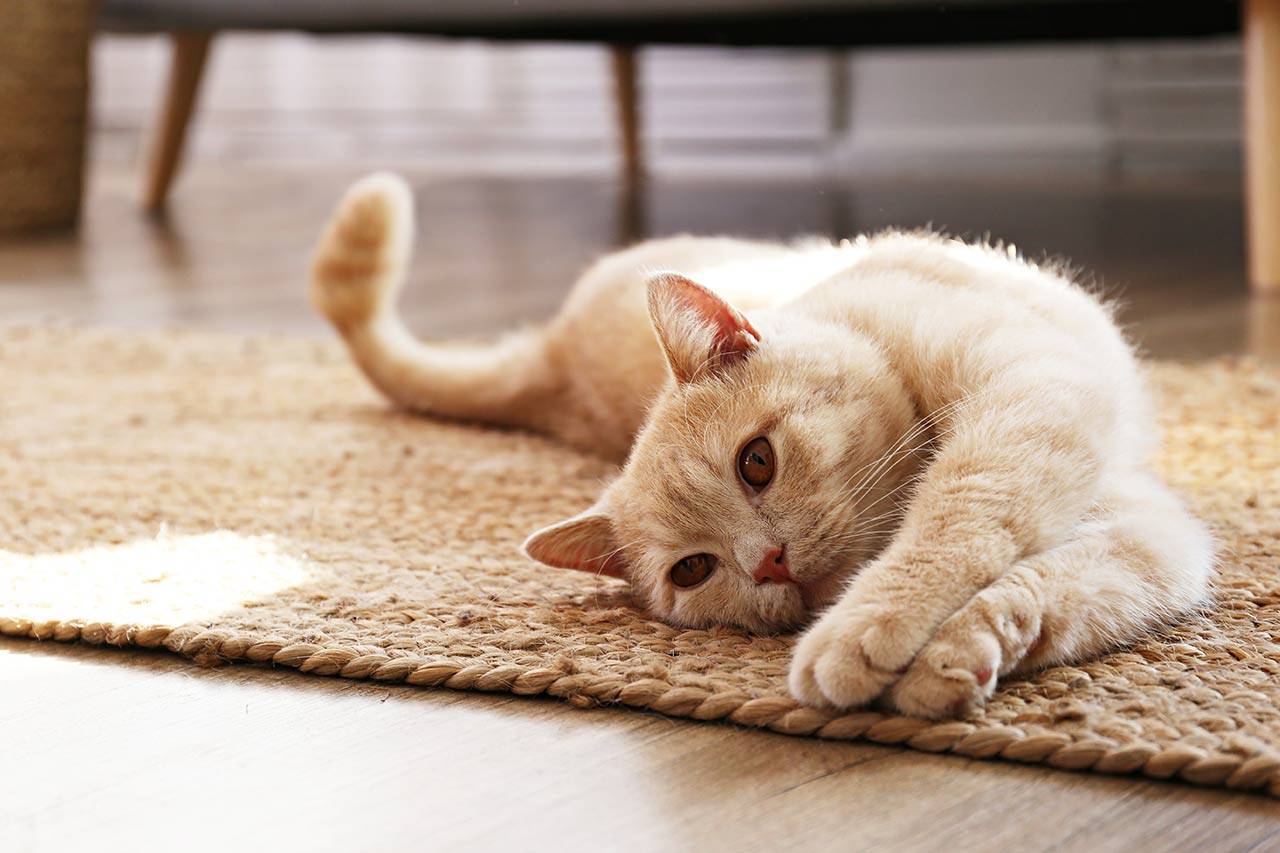How to assess and improve a cat’s wellbeing

Alcimed, a consulting company specializing in innovation and the development of new markets, reviews the various pillars surrounding cats’ wellbeing and the methods used to assess it.
A look back at the evolution of the concept of animal welfare over time
The wellbeing of cats and other animals has not always been a concern for humans. However their view on the issue has evolved over time. After being absent from any consideration, animal welfare was first defined more than 35 years ago as the absence of discomfort, taking the form of five freedoms that need to be respected (see box on the right). More recently, it has been recognized that animal welfare goes beyond a simple neutral state (absence of discomfort), and that positive notions such as pleasure, joy and attachment should be considered. New studies are emerging that demonstrate that this positive state of wellbeing could have a significant impact on the animals’ health.
N.B.: The five freedoms of animal welfare:
- – Physiological freedom (absence of hunger and thirst)
- – Environmental freedom (absence of discomfort)
- – Sanitary freedom (absence diseases and injuries)
- – Behavioral freedom (the right to express normal animal behavior)
- – Psychological freedom (absence fear and anxiety)
Origins of a cat’s wellbeing
In cats, the achievement of wellbeing is highly dependent on their ability to act according to their natural needs, developed by their ancestors living in the wild. Any action contrary to these needs requires the cat to make an effort to adapt. A cat’s ability to adapt depends both on the individual and on the environment and relationships it has experienced during its first few months. For example, weaning time and interactions with the owner or other pets play a very important role. The greater a cat’s adaptability, the more capable it will be of achieving a state of wellbeing.
A cat’s wellbeing depends on five pillars
Through a combination of a scientific research review and numerous interviews with cat welfare experts, Alcimed has identified five pillars that drive a cat’s sense of wellbeing. These pillars include fundamental factors to consider in order to prevent situations of discomfort, but also factors to ensure the cat’s welfare by enriching its environment as a whole.
Food – a strategic pillar that comprises both the type of food and how it is delivered. Beyond the debate between dry (kibble) and wet (pâté) food, new diets, based on raw foods or homemade recipes, are emerging. The position of nutritionists on such regimes is not yet clear. The scientific community, for its part, is stepping up its research on the use of probiotics in (or in addition to) food formulations. Probiotics, used in both humans and animals, have a very high potential to regulate the intestinal microbiome, improving the digestive and immune systems. Lastly, the use of toys to deliver food (“Food puzzles”) is currently very popular as it allows the animals to feed by reproducing pseudo-hunting behavior, providing them with both physical and mental stimulation. The toys have been successfully used in several recent case studies to improve the cat’s health and wellbeing.
Sleep – allows the cat to recover energy but also to restore part of its immune system, which is why it’s important for the owner to respect its many sleep patterns.
Hygiene – is an important marker of a cat’s wellbeing, so the animal must be placed in the best possible conditions, especially as far as litter is concerned.
Space – is one of the most impactful pillars. The installation of perches, scratches and hiding places are elements that allow the animal to act according to its fundamental needs.
The relationship – can be stressful if the owner does not pay attention. Respecting the signs of rejection is essential to avoid causing the cat undue stress.
Overview of methods to assess cat welfare
There are various ways to measure how well a cat is doing: through the measurement of physiological parameters or by observing the animal’s appearance and behavior in its environment.
Physiological parameters are mainly used in scientific studies. Cortisol is regularly measured to assess stress levels. Heart rate variation was monitored in dogs to assess a positive state of excitement and pleasure, which could potentially be replicated in cats. Nevertheless, physiological parameters are very often impacted by many phenomena and are therefore complicated to interpret.
It seems that observing the cat in its environment is the best way to assess its wellbeing. Such observation is carried out at the level of body aspect and behavior. The 3 body parameters observed are related to body shape: weight gain, musculature, and coat. A cat that no longer washes or licks itself compulsively is a stressed and disturbed cat. On the contrary, a silky coat is a sign that the cat is healthy and flourishing.
Observation of behavior allows us to identify signs of stress and discomfort but also positive signs of trust and calmness. The main signs of discomfort are uncontrolled urination, aggressive behavior, loss of appetite, compulsive grooming or destruction of the environment. In contrast, a healthy cat can be identified by the sharing of glances with very slow blinking eyes, purring in relaxing situations, complete grooming, as well as any attempt at contact and closeness with its owner.
Today, questionnaires have been developed for owners to assess their cat’s wellbeing and quality of life. They use the observation concepts that have just been presented, which are noted according to their importance and the frequency of observation.
Despite the different methods presented, the measurement of wellbeing is not yet a rigorous one. The owner of the cat remains the most appropriate judge in this regard. Enrichment of the environment allowing the cat to behave in a natural and instinctive way, as well as a healthy and respectful relationship, are the best ways to enable a cat to achieve wellbeing. This state then promotes better health, as new scientific studies seek to demonstrate.